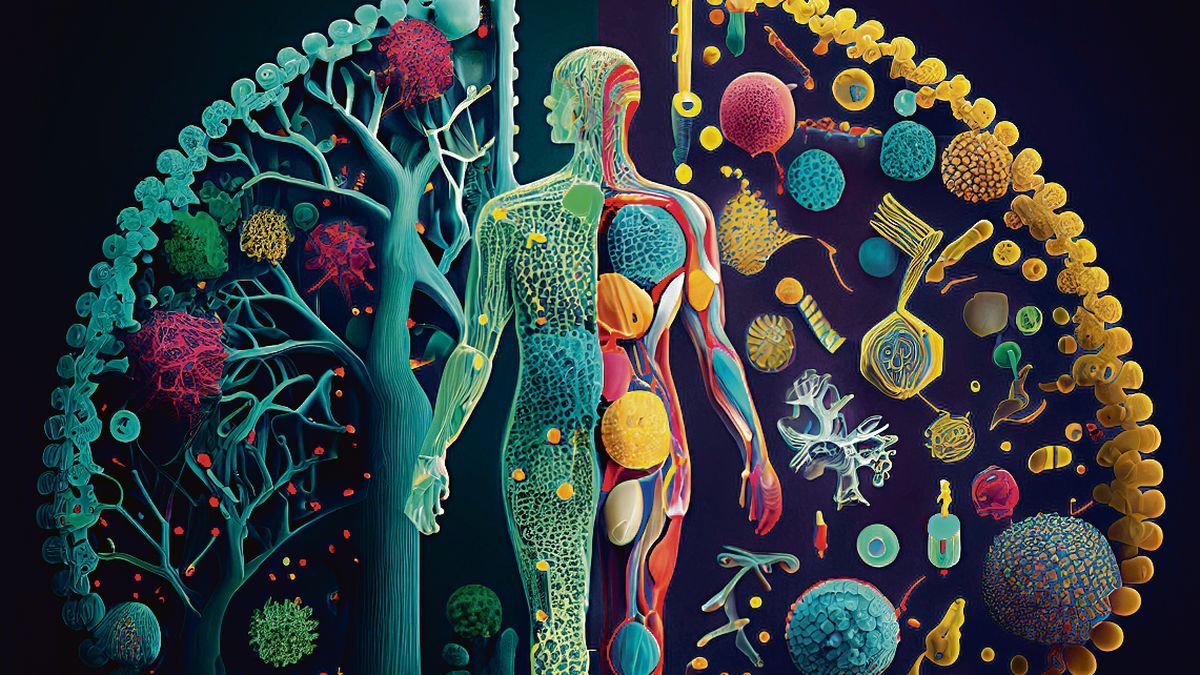The theme for this year is “Feed your microbes: how diet shapes your gut microbiome”
We are going through a stage of great evolution and revolution of the Microbiome. When we talk about the microbiome we refer to the set of microorganisms, their genes, substances they produce and the environment in which they live, such as our body, the gastrointestinal tract, the skin, the mouth, but it also includes soil microbes, animals and the environment. We are understanding the potential for global health and well-being that comes with the interdependent connection of microorganisms from the human, animal, and agricultural interface.
The content you want to access is exclusive to subscribers.
We live immersed in a microbial world and the microbiome-centered approach considers humans as superorganisms that maintain a symbiotic, mutually beneficial relationship between microbes and those in the environment, which represents a fundamental basis for maintaining good health.


Due to its size and functions, the microbiota located in the intestine is considered “the master of microbiotas” since the microorganisms that make it up exponentially increase the human metabolic capacityWithout them it would be impossible to carry out different processes since human evolution did not provide us with all the necessary tools to act alone; we need the help of microbes for a healthy life.
We need them to carry out a great variety and quantity of actions such as digesting dietary components such as dietary fiber, to modulate and train our immune system, to produce substances such as vitamins, to improve our mood, to mitigate chronic inflammation of the low grade, to have a better tolerance to foods, among many other essential actions. To understand its dimension, it is considered that the microbiota participates in about 20 thousand metabolic functions.
How to achieve a healthy, robust and resilient microbiota? I bring you 10 simple strategies:
- Get in touch with nature, you can go for walks in the open air and whenever you can, walk barefoot on the grass or on the ground.
- If you have pets, hug them, caress them; This helps the transmission of microorganisms
- Have close contact with other people, those who live together maintain a more marked transmission of microorganisms, the more time people spend together, the more bacteria they share. For example, a study estimates that those over four years old who live in the same house share 12% of bacteria, while babies from 0 to 3 years old can share up to 34% with their mothers.
- I included foods rich in fiber such as legumes, whole grains, nuts every day.
- Eat well-washed but raw fruits and vegetables daily, as they contain soil microorganisms that can benefit you.
- Add live microorganisms frequently through fermented foods such as yogurt, unpasteurized sauerkraut, kefir
- Choose a variety of colors on your plate, including foods rich in polyphenols such as red onion, walnuts, red fruits, and black beans.
- Incorporate foods rich in prebiotics such as onion, leek, garlic, fennel, artichokes, broccoli, cabbage, cauliflower, beans, lentils, chickpeas, almonds, walnuts, pistachios, and whole grains such as wheat, oats, barley, and rye
- Avoid excess packages and ultra-processed products since emulsifiers and some food additives negatively affect intestinal permeability.
Graduate in Nutrition specialized in the study of the intestinal microbiome
Source: Ambito
I am an author and journalist who has worked in the entertainment industry for over a decade. I currently work as a news editor at a major news website, and my focus is on covering the latest trends in entertainment. I also write occasional pieces for other outlets, and have authored two books about the entertainment industry.




